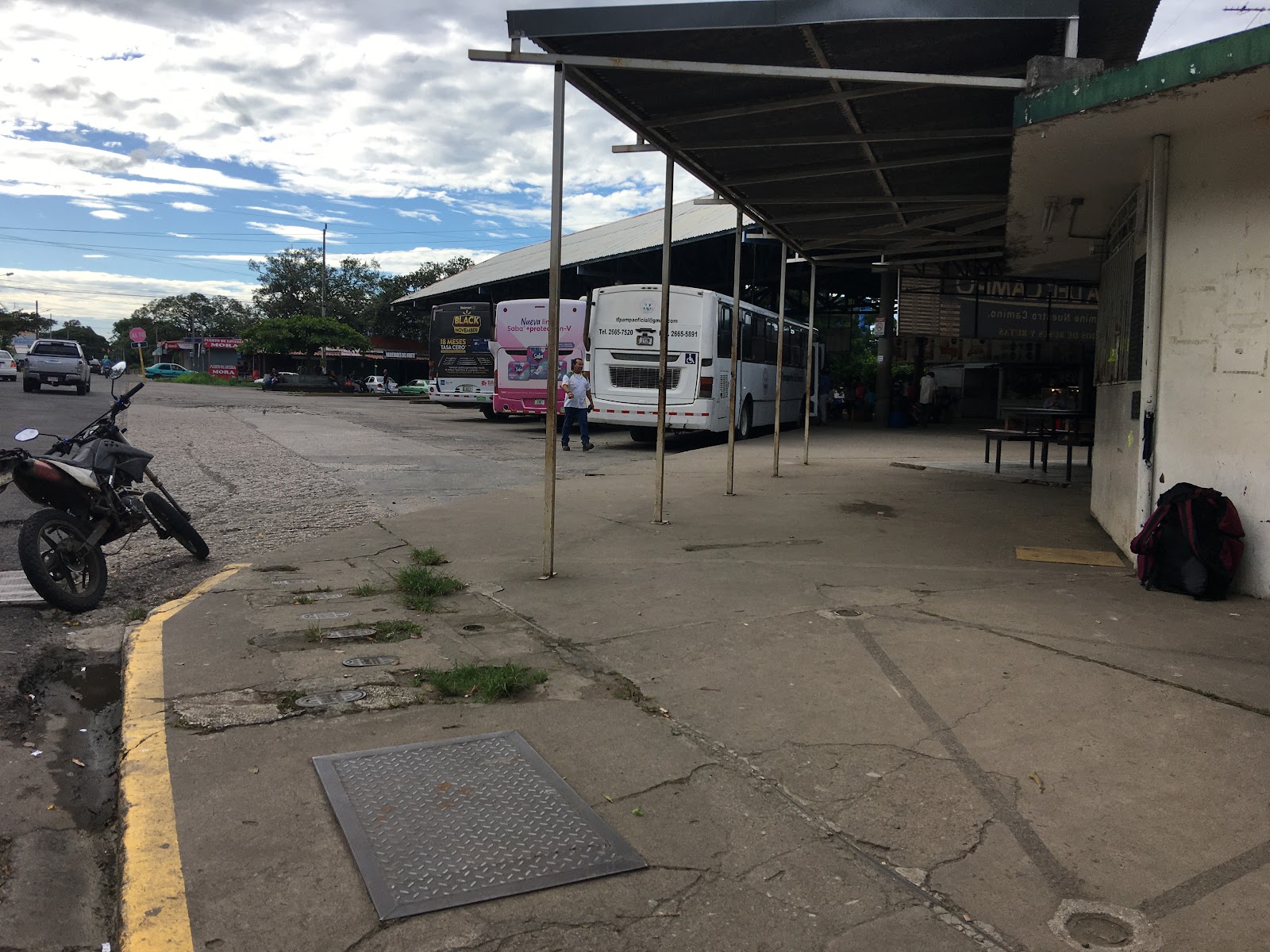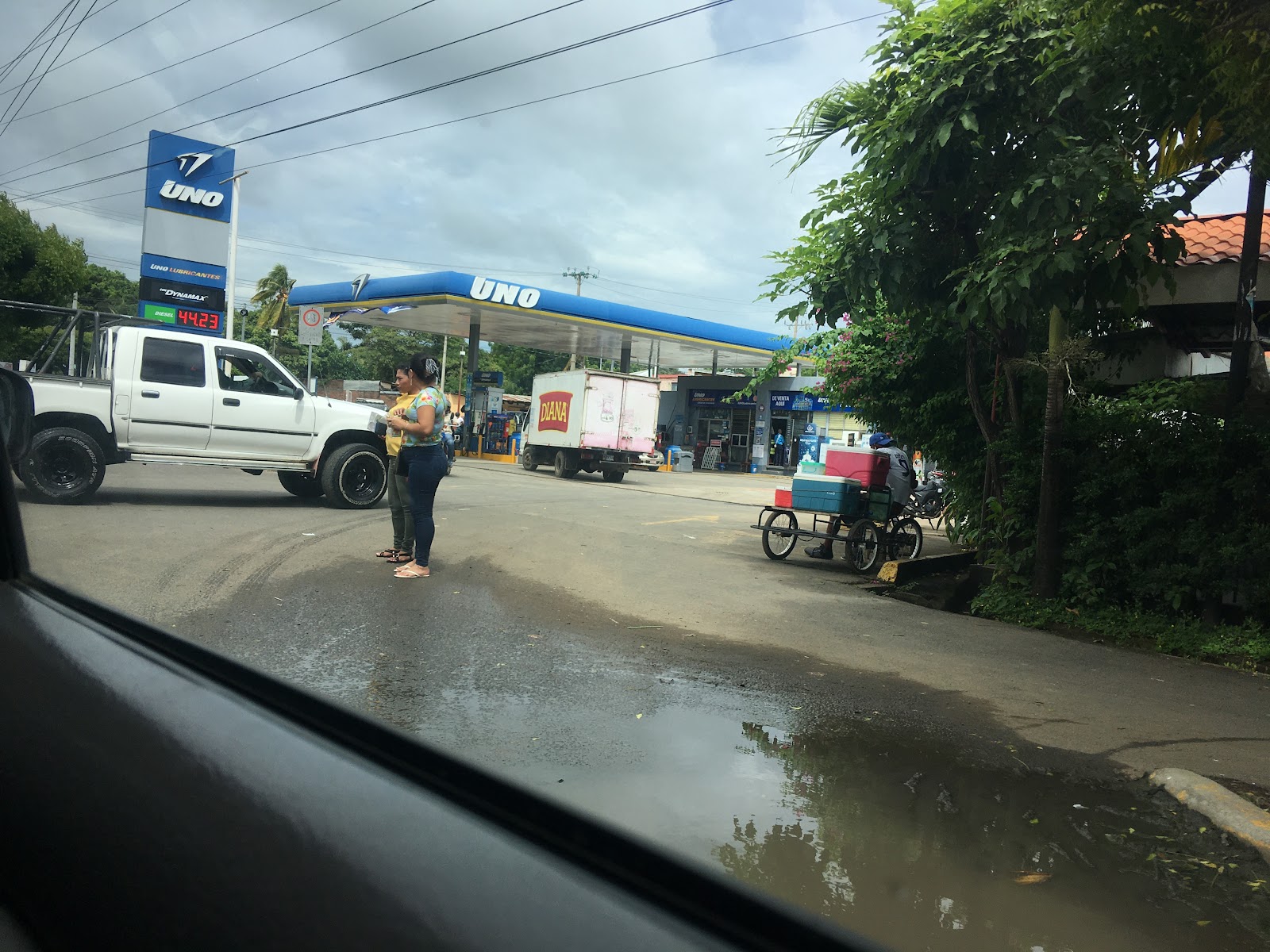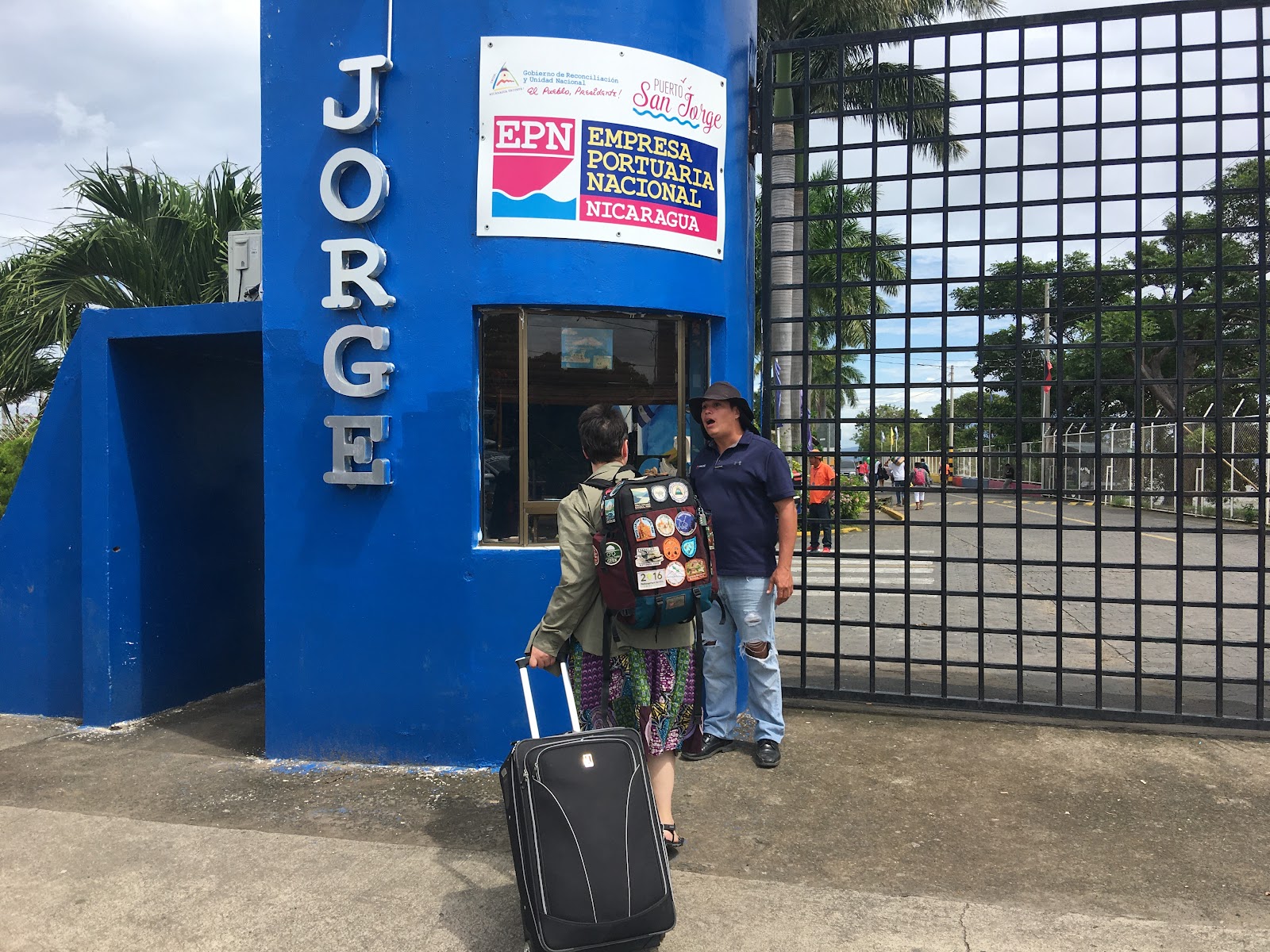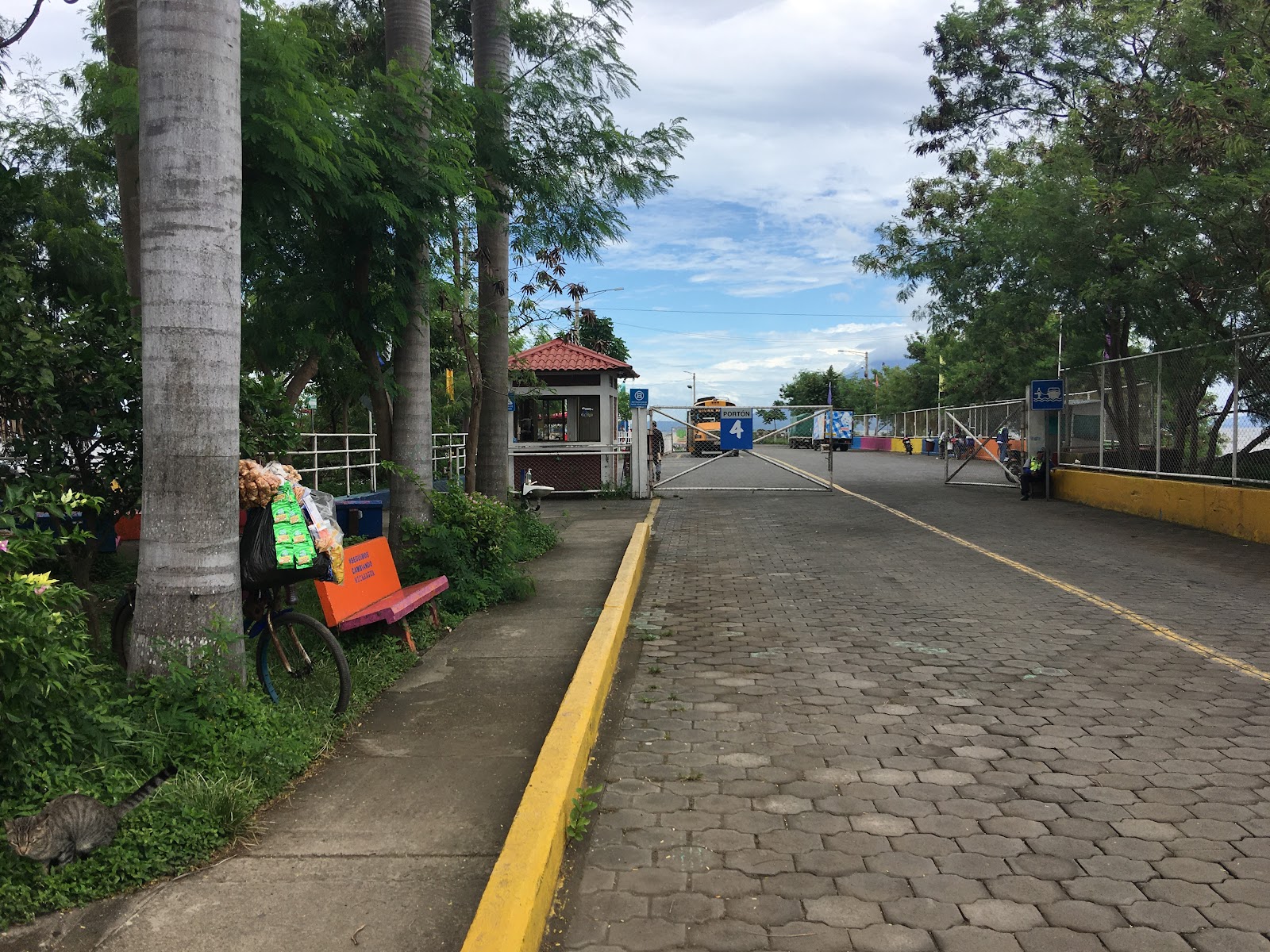Note: As of July 2023, COVID-19 requirements are no longer in effect for Nicaragua and Costa Rica. No vaccine card nor negative PCR test are required.
All of this information was gathered on our trip in early
November 2022, so prices and other details may change. All prices are per
person unless otherwise noted.
What you need before you go:
- Have your passport up to date, valid at least 6 months beyond when you plan
to return to your home country. Have your COVID vaccine card with your passport
so you can show it at the border. If you’re not fully vaccinated, a web search
will help you keep up to date on what the requirements are for entering
Nicaragua.
- There is a form for entering the country that usually is not asked for, but technically can be required of you to fill out at least one week in advance of entering the country. The form is found at https://solicitudes.migob.gob.ni/ and more information can be found at https://nica-biz.com/entry-to-nicaragua-online-application-form/. The most common difficulty in filling it out is when it asks you who invited you to the country - you can put down the contact information for a hotel or someone you know in the country. ***Update: this website seems to not be working for anyone. When you fill out the form and hit "submit," it gets hung up. No one seems to have had a problem getting through the border without the form (if you have had trouble, please let us know!).
- You need US dollars in exact change, crisp bills with no rips, stains, or
markings. You’ll have to pay $10 for the Costa Rican exit fee (unless you pay
ahead online at https://www.bancobcr.com/wps/portal/bcr/bancobcr/personas/solicitudes_en_linea/pago_impuesto_salida_terrestre/,
then it’s only $8, but have a receipt!), $1 to enter the Nicaraguan border
building, $13 for the Nicaraguan entry fee, and taxis will take payment in USD
as well.
- Costa Rica requires proof of departure before 180 days is up. This is usually
a flight out within 180 days, though it can be a bus ticket to some other
country, though the bus tickets can be hard to get before you get to the bus
station… Our latest flight in November was the first time we were required to carry proof of return flight while checking into the flight, so have it ready in whichever airport you are
departing from! How to get past the 180 day limit is beyond the scope of this
blog, but web searches can help.
- Nicaraguan immigration will want to know where you are going to stay when
you’re in country. A hotel reservation screenshot or a friend’s phone number
and address should suffice, but have those on hand when going through the
border. They will also usually ask your profession, so have a simple answer for
them – teacher, lawyer, something of that sort. Sometimes Nicaragua asks for a return ticket as well, but it is variable--better to have one ready just in case!
- Nicaraguan customs will take drones and binoculars from you, so it’s best not
to try to carry them. If you have multiple laptops or smartphones, or anything
else of great value, they may want to tax you. There were restrictions put on professional, journalism-grade cameras and on binoculars, but it seems at least the restrictions on binoculars were lifted around March 2023. Most cameras are fine.
- The trip from Liberia to Ometepe takes many hours, so unless you land in
Liberia in the morning, you might want to plan to stay a night there. Our
favorite place to stay is Hospedaje Dodero, and reservations via booking.com
are recommended.
When you land at the Liberia airport, follow the crowd
through immigration (an official will stamp your passport – they will ask about
when you are leaving the country, so be prepared to answer here too), pick up
any checked luggage, then go through customs (you’ll have to run your bags
through an x-ray, and they will occasionally ask to see your passport). No
forms are needed for immigration or customs. There are money changing booths in
the room with immigration and another with baggage pick-up. I’m sure they’re
not a great deal, but we just changed $20 to Costa Rican colones to have bus
fare.
After the luggage x-ray, you’ll go through a door and be
confronted by all kinds of drivers with signs for who they are there to pick
up. There will be a person there to help you get a taxi if you want one ($20 to
town no matter how many people, 10-15 minutes) – they keep the taxi drivers
honest. Taxis are out the door to the right. If you would rather take a bus, go
to the left and to the far side of the airport (30-45 minutes plus wait time, 600
colones (about $1), pay the driver at the front of the bus – they may ask you
to go to the back of the bus if you have luggage, or to put it under the bus if
there are many people with lots of luggage).
Busses from the airport to Liberia will drop you near the
main bus station, often one block east. (Taxis obviously will drop you where
you’d like.) Our favorite place to stay, Hospedaje Dodero, is two blocks north.
Photo: If you’re seeing this from where the bus drops you, the bus station is behind
you.
In the bus station itself, the bus to the border is the
third bus in, helpfully labeled “Frontera” (“border”) in the window and “Liberia
– Peñas
Blancas” up top. If the bus isn’t there, the folks wandering around selling
food and drinks will be happy to point you in the right direction if you ask
them “Donde estará el bus que va a la frontera?” You will pay the driver at
the front of the bus (2000 colones per person as of October 2023, equivalent to less than $4), and also ask them to help you with any bags you want to
put under the bus (which will be anything beyond a small bag you can keep in
your lap) – your bags are going with you to the last stop, “terminal” or
“frontera,” so be sure the driver knows that as they put them below.
We always do this leg by bus, as taxis in Costa Rica are quite expensive. The ride from Liberia to the border is about $80.
The bus ride takes about 1.5 to 2 hours. You’ll get out at
the last stop, which is inside the fence of the Costa Rican border building.
Before you talk to the customs agents in this building, you must have a receipt for the Costa Rican
exit tax (unless you came directly from the airport to the border - this tax is waived if you spend less than 12 hours in the country). Currently there are machines that look like ATMs inside where you can pay it with a credit card, but they have not always reliably worked. It can be paid ahead online (https://www.bancobcr.com/wps/portal/bcr/bancobcr/personas/solicitudes_en_linea/pago_impuesto_salida_terrestre/). If both of those options don't work, you must go back outside the fence (back the way the bus came) to the two
houses where they will take $10, look at your passport, and give you a receipt
for your tax. Either one of the houses will do.
Photo: Looking back from where the bus drops you off to where the tax houses are.
Inside the Costa Rican border building, you’ll need to show
that exit tax receipt and your passport, and they’ll give you a stamp.
Once
you’re out, you’ll be walking a ways to the Nicaraguan side with a couple stops
along the way to show random police your passport (if walking is too difficult, sometimes there are bicycle taxis who can help). Go north (the bus came from the south):
Cross the road just past the fence:
Just in case the police in the little white shed want to see
your passport – they sometimes do, sometimes don’t.
Keep going north, and cross the road again so you can show
the police on the sidewalk your passport and COVID vaccination proof.
You’ll finally get to the Nicaraguan border building.
You’ll first need to stop by the nurses’ window to show your
COVID vaccination proof. They will give you a card to bring with you into the
building.
Once inside the main building, someone will approach you to
pay a $1 municipal tax to be in the building. They will often refuse to give change,
so have $1 for them. Then you’ll go to one of the windows that is staffed and
get your entry stamp – they will want to see your passport and get $13, and they also often don’t give change. They will likely ask for where you are going in
Nicaragua, and this is where a screenshot of a hotel reservation or friends’
phone numbers and addresses will be useful. When done there, you’ll go to the
x-ray booth to run your baggage through.
Our recent trip through the border was one of the fastest we
have done, taking 50 minutes from when the bus dropped us off on the Costa
Rican side to when we got out of the Nicaraguan border side. If lines are long
or if immigration decides to ask you lots of extra questions (which happens to
us since we have so many Nicaragua/Costa Rica stamps and typically won’t happen
to tourists), it could take two or three hours. This uncertainty is why we only
attempt the border crossing with a morning start from Liberia.
Once you are out of the building, keep walking north toward
the exit of the parking lot. A couple bus companies can park their busses here,
but they are the high-cost companies. If you’re looking for a cheap ride or a
taxi, pass by these busses. Head for the exit, where you will show your
passport one last time.
Photo: In the background is the last passport checkpoint. We didn't want to appear to be taking the police officer's photo, so this is the best we've got.
As soon as you are past this checkpoint, you will be
bombarded with taxis, money changers, and phone sim card vendors. Rumor has it
these money changers offer good value, but we don’t know from experience. We
did get ripped off by a phone sim seller, so we won’t get it there again –
we’ll wait until we can get to the real shop near home. If you want to take a
taxi to the Ometepe ferry from here, the price should be $25 or less for a private taxi. A collectivo taxi (multiple people), might charge 100-200 cordobas, but they are hard to find among the private taxistas bomarding you if you look like a tourist. All taxistas will
try to sell it to you for more, so prepare to bargain. If you want to take a
bus, keep walking north a block or two’s distance until you see the bus station
on the left.

The bus will be going at least to Rivas, and perhaps farther
north. In Nicaragua, you talk to the bus’s “ayudante” (“helper”), not the
driver. You don’t pay up front, you wait for the ayudante to come by sometime
on the ride to take your money.
Photo: A particularly crowded bus with the ayudante taking money. If you don’t give
exact change, don’t be shocked if the ayudante takes your larger bill and walks
away for a while – they will return with your change before you leave the bus.
You will take the bus from the border to “la gasolinera” in
Rivas (40 cordobas or just over $1, less than one hour). If you say
you’re going to San Jorge (the mainland port town for the ferry to Ometepe),
they should offer “la gasolinera,” and if you ask they will let you know when
you’re near the stop so you can get off in time. It is easy to miss this stop if you are on a bus going beyond Rivas, so it's good to ask someone to help you, or take a taxi if you are not certain. Rivas-direct buses will turn into the bus station, about 5 blocks west of the gasolinera, where you will be bombarded with aggressively overcharging taxistas, so if you end up there, it's best to walk east towards the gasolinera and get a cheaper taxi.
Photo: The sign before the gasolinera in Rivas.
Photo: The gasolinera at the turnoff to the Ometepe ferry.
When you get off at the gasolinera, you may be lucky to have
a bus going by to San Gorge and the ferry dock, but they are much less frequent
than other busses. We usually take a “colectivo,” or a taxi that will pick up
other people on the way (30 cordoba or $1, ten to fifteen minutes). They may charge you a little more for being a foreigner, or charge you up to double if you have extremely bulky luggage, but never pay more than double the going price!
Photo: “Colectivos” or taxi rideshares who will take you from the gasolinera to the
ferry dock.
**NOTE** There have been reports of fraud at the port. If
someone comes up to you here and tells you that you need reservations for
transportation on the island, or that there are no hotels with space, etc –
IGNORE THEM. They will give you ridiculous prices and dubious reservations. If someone offers to help you through the process of paying fees and
buying ferry tickets, sometimes they are legit – but as soon as they say
they can arrange transport, hotels, or tours for you on the Ometepe side, get
away from them.
You will be dropped off outside the gate to the port. At the
small booth next to the gate, you’ll pay a $1 (they keep up with the current
exchange rate, currently 37 cordobas) port fee. You will be given a small
receipt – keep this on you just in case you are asked for it, which rarely but
occasionally happens.
Pass through the gate and walk past the parking lots. You
will see a set of buildings on the left where you can purchase ferry tickets
(50 cordobas). If the ferry is about to leave in the next ten minutes, skip
this step and buy your ticket on the ferry during the ride. If you have time,
though, they prefer you buy tickets at these windows. Check the schedule above
the awnings for which ferry company is providing the next ferry, then go to
that company’s window to buy your ticket. They are usually honest at the window and will tell you if they are the next ferry or not. We try to keep the schedule up to date at:https://sites.google.com/view/pumatoursometepe/ometepe-transportation

Keep walking toward the dock. If you have lots of extra time, there are a couple small restaurants that you can relax at, buying a drink or a meal. Once it’s time for the boat, you’ll pass through another gate where someone will approach you with a clipboard and ask you to write down your name and passport number. This is required by the government for everyone boarding the ferry.
Enjoy the ride! It takes a little over an hour from San
Jorge on the mainland to Moyogalpa on the island. (One or two ferries a day go
to San Jose del Sur, another port on Ometepe that isn’t too far from Moyogalpa
– if you end up on this ferry, the landing is pretty simple, as there should be
a bus waiting which will take you to Altagracia, etc. For the purposes of this
blog, we’re assuming you land in Moyogalpa.)

The exact dock you’ll land at in Moyogalpa depends on the
water level. They are close together, but on different sides of the bus stop (see 2023 note below - the bus stop is temporarily up one block).
If you walk off the ferry and see a large sculpture of the island’s two
volcanoes, go left to find the bus stop (see 2023 note below). If you walk off the ferry and see
strange parking lots and have to walk through a small gate past a building to
follow the crowd, the bus stop will be to your right (see 2023 note below). You are looking for a
building marked “Ferry El Che Guevara.” We try to keep bus schedules up to date at: https://sites.google.com/view/pumatoursometepe/ometepe-transportation
Photos: Coming out of the higher-water port, with the bus stop to the right.
Late 2023 update - due to road construction, the bus is now picking up at Gasolinera Sta Ana, one block uphill/east/toward the volcano from the port - see photo below
 |
Gasolinera Sta Ana, the bus stop while construction continues
1 block uphill/east/toward the volcano from the old bus stop |
The bus will sometimes be waiting when the ferry comes in and take off shortly after, but sometimes it
won’t. We had to wait about 45 minutes for our bus.
Busses from Moyogalpa all go to Altagracia first (22
cordobas, 1 hour), and will sometimes continue on to the other side of the
island. Busses are the way to go on the island for the majority of your travel,
as taxis are expensive here, $30+ to get anywhere. Some taxistas will tell you there are no buses to trick you into buying their service--be careful!
Photo: The bus stop at the park in Altagracia
If you’re heading to Centro PUMA in Altagracia, which we
highly recommend, you’ll get off at the main Altagracia stop at the park, then
walk one block ahead, turn left, and go one block more. We’ve got refreshing
coffee and smoothies for the weary traveler, a chill place to hang out, and
good tour info if you’re interested. Visit our webpage, google profile, or facebook page for our updated opening hours:
Our webpage: https://www.guiasunidos.org/centro-puma/
Google: https://g.co/kgs/7nhCLD
Facebook: https://www.facebook.com/guiasunidosnicaragua/

If you’re heading to the Maderas side of the island, you can
go into Altagracia and pick up a bus at the main station at the park going to Balgue or
Merida. All Maderas busses will pass through Santo Domingo and Santa Cruz. Or if you want to
skip Altagracia, you can get off the Moyogalpa-Altagracia bus at El Quino
(pronounced El Key-no) and wait there for the next bus heading your way. Sometimes a bus is waiting at El Quino for the Moyogalpa-Altagracia bus to pass to pick up passengers transferring to the south end of the island (like the pink bus in the picture below). We try to keep bus schedules up to date at: https://sites.google.com/view/pumatoursometepe/ometepe-transportation
Photo: The bus stop at El Quino
Enjoy your stay on La Isla, the oasis of peace!














































